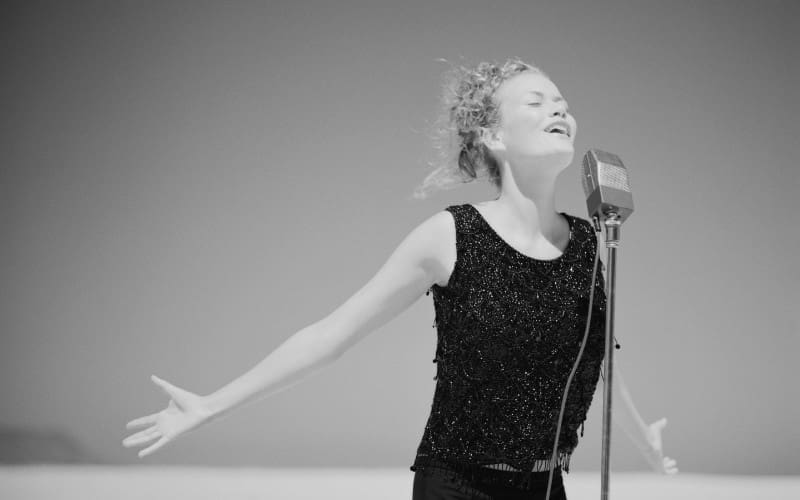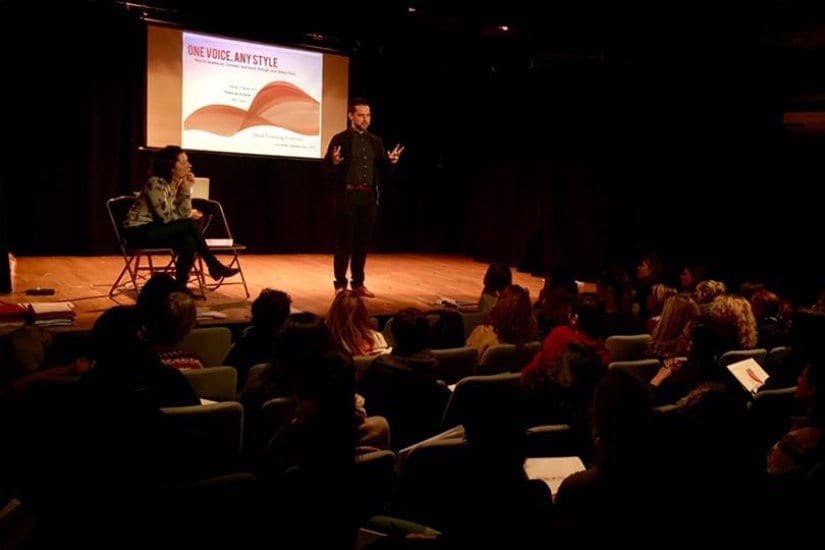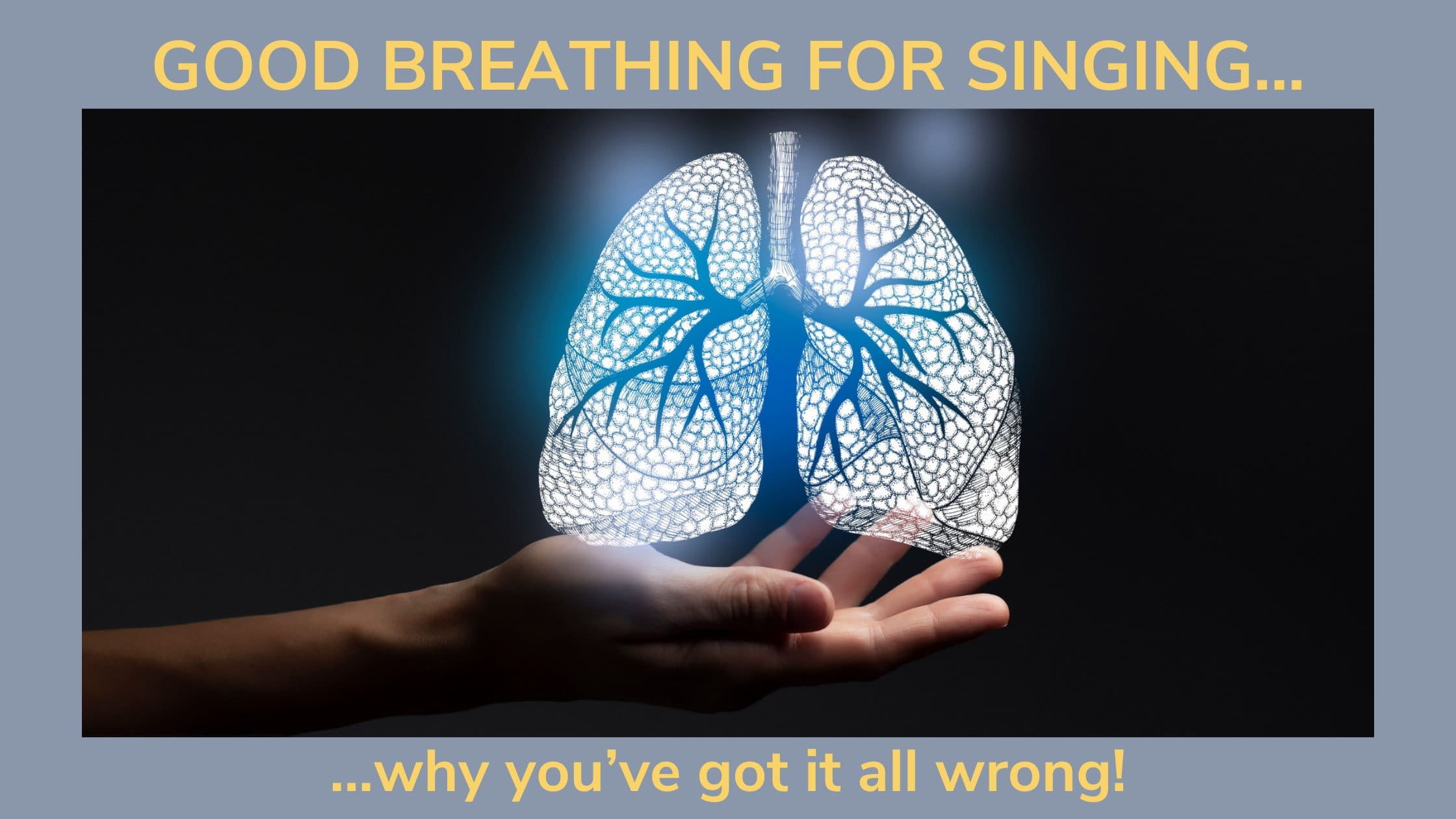Working with breath in the context of the whole vocal system from the beginning of vocal training allows its integration and balance in singing/voicing to grow and expand throughout the learning process.
-
Here are 7 BIG CONCEPTS to keep in mind:
- ONE: The Complex System of Vocal Production
- TWO: It’s a Balancing Act
- THREE: The Passive Nature of Breath
- FOUR: Compartmentalization vs. Integration
- FIVE: The Power of Connection
- SIX: Facilitating Multi-level Learning
- SEVEN: Breaking Free from Artificial Constraints
- EIGHT: Empowering Systemic Learning
- Voice Training through a Comprehensive Perspective
- THE SINGING SELF PROGRAM – Teacher Track
In the world of vocal education, a spirited debate has emerged regarding the pivotal role of breath in achieving peak vocal performance. While some experts emphasize its significance, others advocate for a more holistic approach, recognizing breath as just one element in a dynamic system. Working with breath in the context of the whole vocal system from the beginning of vocal training allows its integration and balance in singing/voicing to grow and expand throughout the learning process without having to attempt integration after “learned compartmentalization.”
The following concepts aim to reshape our understanding of vocal mechanics, challenging conventional perspectives on the role of breath in vocal training.
Here are 7 BIG CONCEPTS to keep in mind:
ONE: The Complex System of Vocal Production
Voice production involves a symphony of actions within various anatomical structures, demanding precise coordination of muscles and neural pathways. While breath is undoubtedly crucial, it’s just one piece of a multifaceted puzzle. Oversimplifying vocal quality by attributing it solely to breath overlooks the complexity of the process.
TWO: It’s a Balancing Act
Breathing is a dance between inhalation and exhalation, but it must be seen in tandem with vocal cord engagement, resonance, and articulation. Achieving harmonious sound demands a delicate equilibrium among these interconnected elements. It’s a gestalt.
THREE: The Passive Nature of Breath
Contrary to its common portrayal as an active force, breath is essentially passive, primarily providing the necessary air for sound production. It’s the finesse and control of this airflow by other elements in the vocal mechanism that truly sculpt the resulting sound – from the vocal folds to the vocal tract and the WHOLE BODY/SELF!
FOUR: Compartmentalization vs. Integration
Often because of the simple fact that there must be breath for there to be sound, teaching “breathing” is seen as a basic element of vocal production that must be taught first. But, I say: Let’s challenge the notion that fundamentals must be learned in isolation before progressing to more complex techniques. Compartmentalization disrupts the natural flow of learning within the vocal system. What if we facilitated a unified understanding from the outset?
FIVE: The Power of Connection
This philosophy centers on the importance of connections over isolated components. It emphasizes that focusing on the integration of various elements of vocal production empowers students to cultivate a deeper understanding of their own vocal instrument in real life – in flux!
SIX: Facilitating Multi-level Learning
This comprehensive approach caters to students at all levels of experience, advocating for simultaneous engagement with different aspects of vocal training. It recognizes the complexity of the whole person and their vocal/self system. This is the crux of my somatic/experiential learning approach to vocal learning. It can seem strange at times – maybe “too advanced” – but, that’s only because 1. you’re over-focusing on the details or 2. you don’t understand systems thinking and a “learning in systems” approach to vocal improvement.

SEVEN: Breaking Free from Artificial Constraints
Questioning the wisdom of a linear progression in vocal training is crucial! We must stop imposing rigid structures that can impede progress. There is a more fluid approach that adapts to individual learning styles and needs while integrating tradition, experience science, best practices and received understanding. The student is, at once, their own subject/object, experiment, and experimenter. We can be a guide for the process, but we must “let the process process” and let the student learn to fulfill and enjoy all roles in it!
EIGHT: Empowering Systemic Learning
One of the most important aspects is guiding students in understanding both conscious and unconscious learning processes. This approach ensures that students continuously evolve as an integrated whole system, avoiding the pitfalls of singular focus and over-relying on conscious strategies for a process that is largely (mostly) unconscious – and should be!
Voice Training through a Comprehensive Perspective
I hope that this discourse surrounding breath in vocal training ignites a crucial dialogue within the community of voice professionals. While breath undoubtedly plays a pivotal role, it is merely one cog in the intricate machinery of vocal production. Embracing a comprehensive perspective that acknowledges the dynamic interplay of all components promises to revolutionize our approach to voice training. By breaking free from artificial constraints, embracing systemic learning, and prioritizing the interconnectedness of vocal production, educators can empower students to reach new heights in their vocal journey.
If you’d like to become that kind of vocal educator, check out my Voice Teacher “un-training” program – THE SINGING SELF PROGRAM – TEACHER TRACK. It’s a comprehensive, very deep dive into this philosophy and experience while giving you the tools to think systemically and work with any singer/voice student in a holistic and integrated way. Your pedagogical paradigm shift awaits!

THE SINGING SELF PROGRAM – Teacher Track
will blow your mind by not only asking you to question all of your basic assumptions, but give you a framework for making the paradigm shift from a mechanistic view of voice and learning to a truly holistic and unified vision for the endless improvement of the body/mind/voice/self.





0 Comments